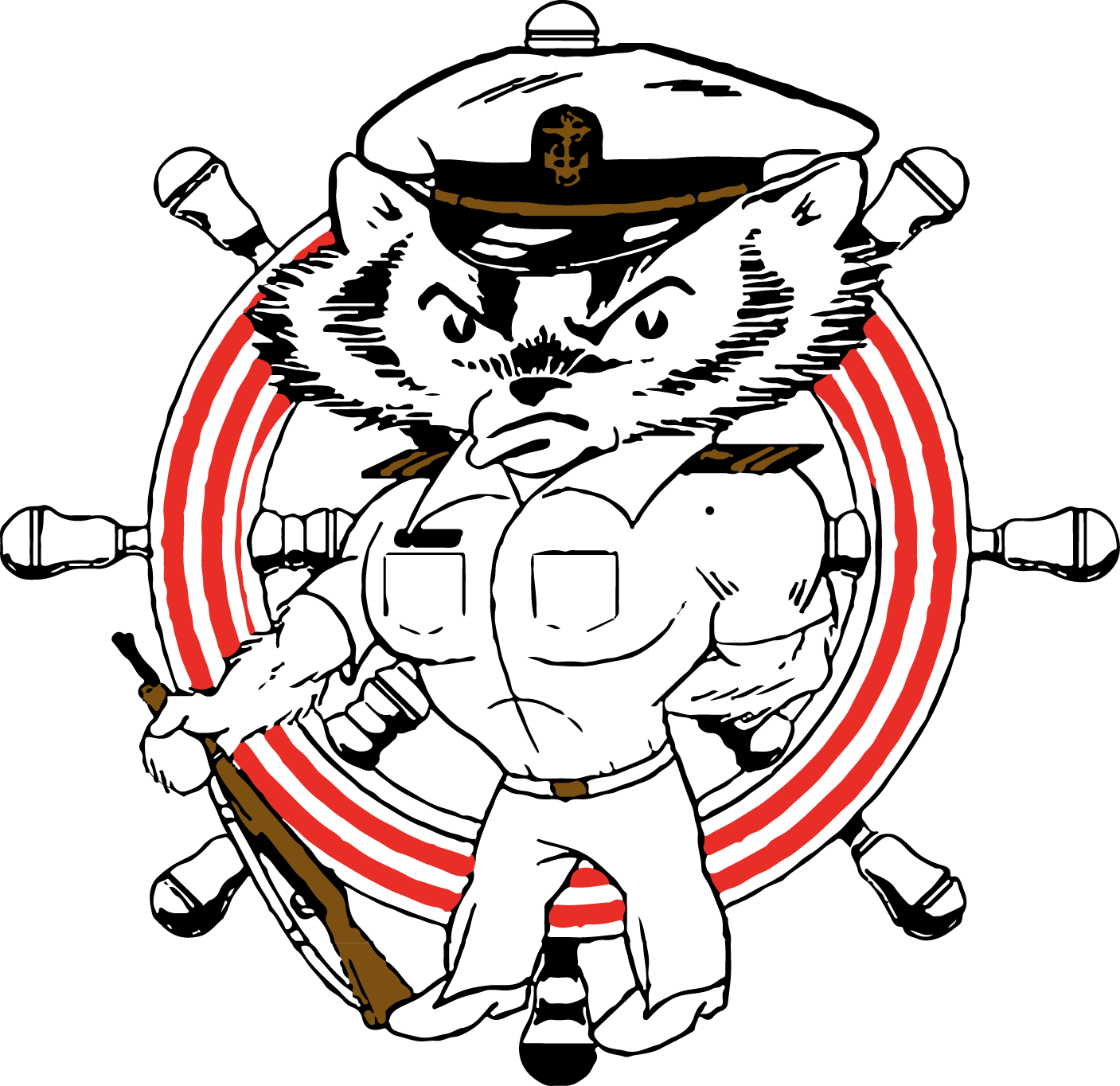Fleet Admiral William D. Leahy
Fleet Admiral Leahy Biography
The following biography was taken from the framed document in the NROTC Unit Wardroom.
William Daniel Leahy was born in Hampton, Iowa, on May 6, 1875. His father, Michael Leahy, a lawyer, had been Captain of Wisconsin Infantry Volunteers during the Civil War. Young Leahy originally hoped to attend West Point, but there were no appointments available. When he completed high school in Ashland, WI in 1893, he was able to win an appointment to the Naval Academy. He graduated in 1897, 15th in a class of 47.
Midshipman Leahy was assigned to USS OREGON, the in the Pacific. He was in that battleship when she made her famous dash around the horn in the Spring of 1898 to participate in the Battle of Santiago on July 3.
Having completed two years’ sea duty - then required by law - he was commissioned Ensign on 01 July 1899. At that time, he was on the Asiatic Station, where, during the Phillippine Insurrection and the Boxer uprising in China, he served in USS CASTINE, USS GLACIER and commanded the gunboat USS MARIVELES. He returned to the United States in 1902, and for the next five years did duty in USS TACOMA and USS BOSTON, which was stationed in Panama during the early period of construction of the canal.
His first shore cruise was at the Naval Academy. Beginning in 1907, he served as instructor in the Department of Physics and Chemistry for two years. He went to sea in 1909 and served as navigator of the armed cruiser USS CALIFORNIA in the Pacific Fleet. During the American Occupation of Nicaragua in 1912, he was Chief of Staff to the Commander Naval Forces there.
Late in 1912, he came ashore in Washington as Assistant Director of Gunnery Exercises and Engineering Competitions. In 1913, he was assigned to the Bureau of Navigation as a detail officer where he served until 1915. At that time, he took command of the dispatch gunboat USS DOLPHIN, and established a very close friendship with the then-Assistant Secretary of the Navy Franklin D. Roosevelt, who cruised with him on the ship. He was in that assignment in early 1917 in West Indian waters and had additional duty as Senior Aide on the Staff of Commander Squadron Three of the Patrol Force Atlantic Fleet.
He served for almost a year as the Executive Officer of USS NEVADA and in April 1918 went to command USS PRINCESS MATOTIKA, formerly PRINCESS ALICE, transporting troops to France.
After a short cruise in that command, he came ashore in 1918 and served for three years as director of Gunnery Exercises and Engineering Competition in the Navy Department, and as senior member of the Fire Control Board. In 1921, he went to sea in command of USS ST. LOUIS, flagship of the Naval Detachment in Turkish waters during the war between Turkey and Greece. At the end of that war, he was given command of MINE SQUADRON ONE, and in 1922 further additional duty as commander, CONTROL FORCE.
When he (then) returned to the U.S. and from 1923 to 1926, he served as Director of Officer Personnel in the Bureau of Navigation, and then had one year in command of the battleship USS NEW MEXICO. In 1927, he reached flag rank and became Chief of the Bureau of Ordnance. After almost four years, he went to sea in 1931 as Commander Destroyers Scouting Force.
In 1933, he came ashore in Washington as Chief of the Bureau of Navigation for two years, when he went to sea as a vice admiral, and Commander Battleships Battle Force. In 1936, he hoisted his four-star flag in USS CALIFORNIA and Commander in Chief Battle Force.
He was appointed Chief of Naval Operations, took the oath of office in January 1937 to serve until August 1939 when he was placed on the retired list. On that occasion, President Roosevelt said “Bill, if we have a war, you’re going to be right back here helping me run it.”
Immediately following his retirement, Admiral Leahy was assigned the duties of Governor of Puerto Rico in September 1939. He served in that capacity until November 1940 when he was appointed U.S. Ambassador to France where he served from January 1941 until recalled in May 1942.
In July of that year, he was called back to active duty as Chief of Staff to the Commander in Chief, U.S. Army and Navy, the President of the United States. As such, he presided over the Joint Chiefs of Staff and, when our country was host, over the combined Chiefs. In December 1944, he accepted the appointment and was confirmed as the newly created rank of Fleet Admiral.
On 25 March 1949, the President accepted his resignation from that assignment. He continued on duty in an advisory capacity in the office of the Secretary of the Navy, and served as President of the Naval Historical foundation.
He died on 20 July 1959.
Fleet Admiral Leahy was highly influential in bringing the NROTC program to Madison. His handwritten note below to the Chief of Naval Personnel would be considered a directive to act. The documents show the strong pull from Wisconsin for the establishment of a NROTC Unit at the University of Wisconsin-Madison and Admiral Leahy’s full endorsement.






